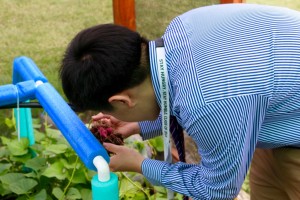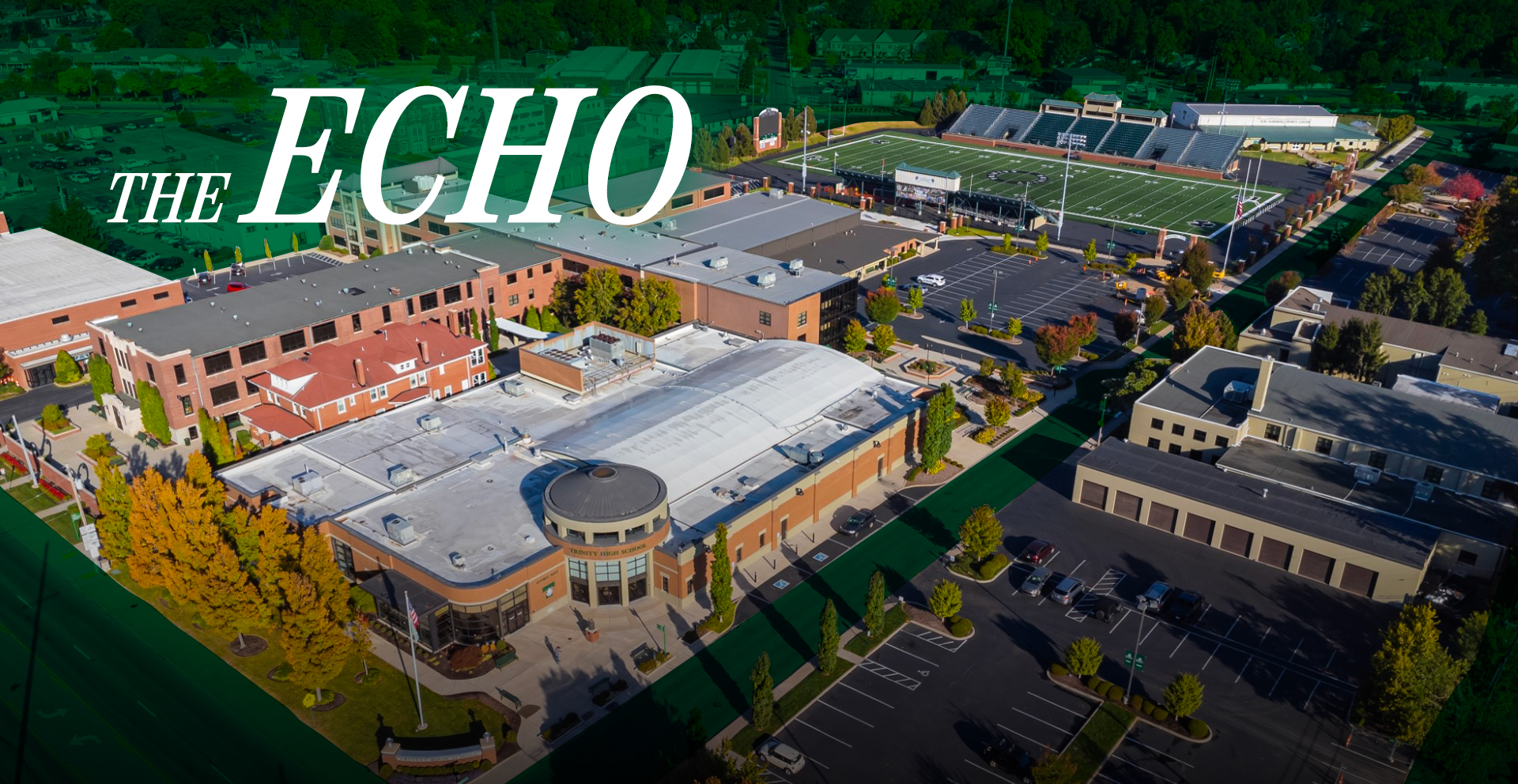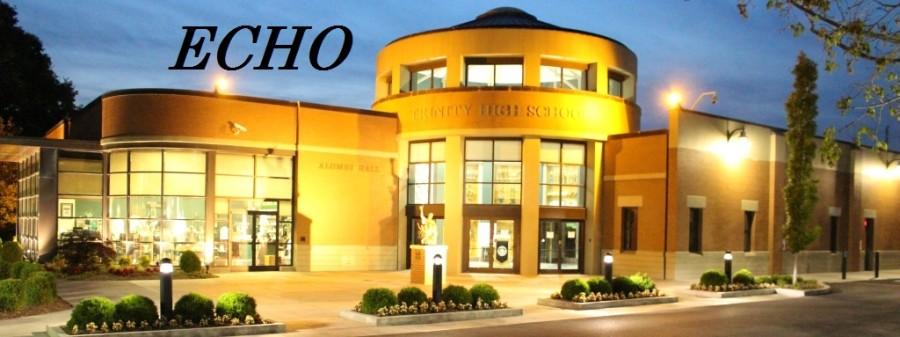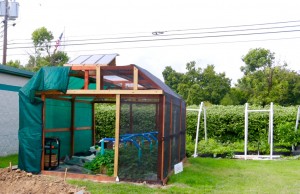Fighting World Hunger One Sweet Potato at a Time
October 1, 2015

Trinity senior Hanli Li
Food drives, rescue efforts and education are among the ways people are trying to solve hunger, still one of the world’s biggest problems. Trinity has added science to the solution list.
Trinity science teacher Mr. Marlon Francis and three of his students saw an advertisement in the National Science Teachers Association Newsletter last year.
Francis said, “We saw the advertisement for science students to enter a project that looked at feeding hungry people.”
In Francis’ space and earth science class, he and his students brainstormed ideas about what could work as a universal crop to feed malnourished people.
“I knew that the sweet potato, the tuber, could be used in all kinds of food preparations,” Francis said. “So from my past research and past involvement as an agronomist in the Caribbean, I knew that it was something we could give a shot at as a school.”
Senior Alex McGrath, a student in Francis’ class at the time, volunteered to be part of the project. He said, “It sounded really cool. I’ve never really done something like this, so I thought it would be a good experience.”
Another member of the group, senior Matthew Pennington, said, “I joined because it was something new to me, and I thought it was a great idea.”
Senior Hanli Li was the third member to join the team. “Since I was taking AP chemistry last year, I wanted to try and use some of my knowledge from his class on a project,” Li said.
After deciding which crop they were going to use for the project, McGrath, Pennington and Li started laying out the groundwork for the project.
“Over the course of a month, we brought ideas together and came up with the prototype of the greenhouse. The objective was to cultivate more sweet potatoes in a smaller amount of time,” McGrath said.
Northern Cameroon was the primary location where the greenhouses would be built. This location required the team to come up with a way to create a clean energy source to fuel the greenhouse.
Hanli, who was in charge of energy use, said, “I was trying to find the most efficient way to use solar energy, so we used solar panels.”
After finding that the solar panels were not as efficient as other ways, Hanli developed a new system. He said, “I designed the Solar Heating Water System. The efficiency was increased because water could be heated by solar energy without using solar panels.”
There were two central questions that drove the project forward throughout last year: Could they grow the crop in a shorter period of time, and would it increase yield?
Francis said there were three essential elements that went into accomplishing the two tasks. He said, “If the plants were exposed to more carbon dioxide, longer lighting, and a special fertilizer, potassium nitrate, the growing of the crops would be successful experimentally.”
The next step was to test the parameters they placed on the project. After using the potassium nitrate fertilizer on the crops, the growth was increased. They then tested the longer lighting with blue lights.
“The reason we used blue lights was because they give higher energy as a result of being on the high end of the electromagnetic spectrum,” Francis said.
Although some specifics were being worked out, the project was well on its way by the second semester of 2015.
Francis, McGrath, Pennington and Li traveled to Philadelphia in late May to compete in the Clean Tech Competition. Teams from Singapore, Portugal, Oregon and New Jersey were among the participants in the competition.
“Although we didn’t win the competition, we got some good exposure,” Francis said. “Our project was considered one of the best projects because it was the only one that had live plants, light equipment and a pump system.”
While in Philadelphia, the team came into contact with multiple sources willing to assist them as the project progressed. Among them was Dr. Frederic Bertley, the senior vice president of science and education at the Franklin Institute in Philadelphia. He will visit Trinity some time this school year.
Francis said, “(Bertley) will be working along with us during this year and monitoring what we are doing with this project. He is very keen about what we are doing. For Dr. Bertley to have such an interest in what we are doing here, it is a big achievement.”
While the strides the team made were tremendous, the project is still progressing at a great rate this year. When McGrath, Li and Pennington graduate this spring, the project will need new students to take the reins.
Francis believes the future for not only this project but an entire agriculture program at Trinity is in sight. He said, “I personally believe Trinity has the capacity to have a strong horticulture and agro sciences program.”
Kentucky State University, known for its strong agro sciences program, will also be working closely with Trinity on an agriculture project based on sustainability. Trinity students will be able to obtain scholarships to KSU through this collaboration.
Trinity continues taking steps to bring an end to world hunger — one sweet potato at a time.
Check out this video of Mr. Marlon Francis and senior Hanli Li examining the fruits of their labor. Video by Michael Hellinger.


